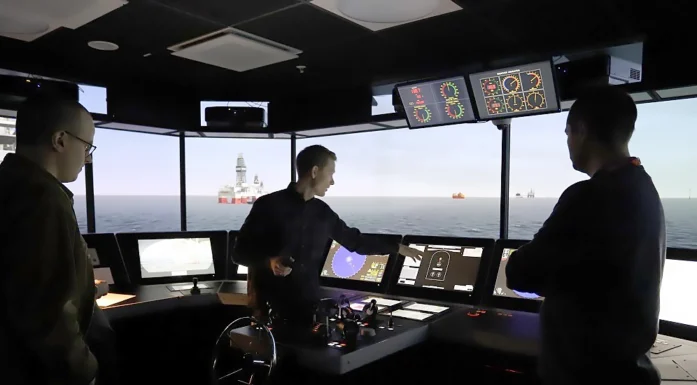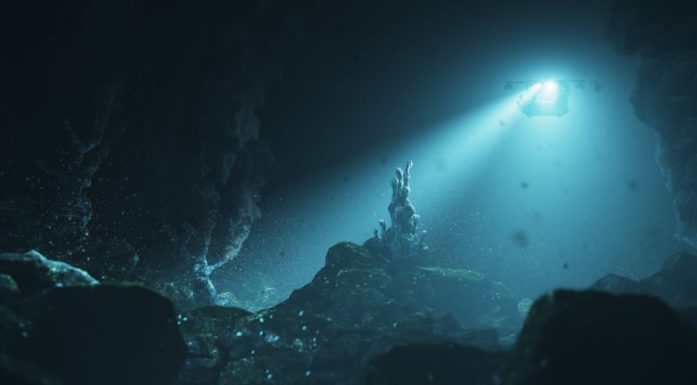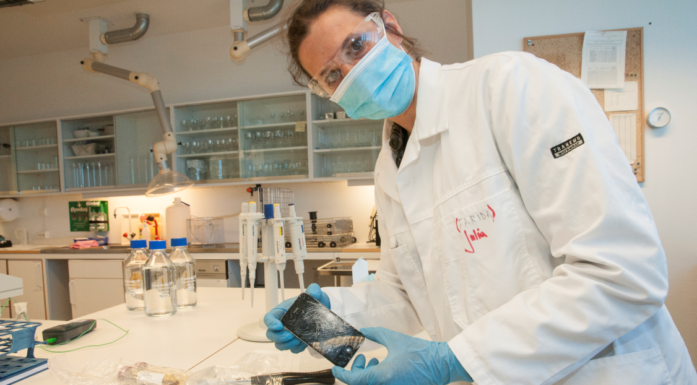Strange bedfellows: Howard Hughes, the CIA and a lost Soviet sub
The American eccentric billionaire, Howard Hughes, wasn’t afraid to make expensive investments in new technologies. So when he announced in 1972 that he was going to build a giant ship to mine manganese nodules from the depths of the Pacific Ocean, few were surprised. But the ship had a very different – and top secret – mission.
It’s April 13, 1973, and a most unusual ship has begun its maiden voyage from Sun Shipbuilding and Drydock, in Chester, Pennsylvania, down the Delaware River to the Atlantic Ocean.
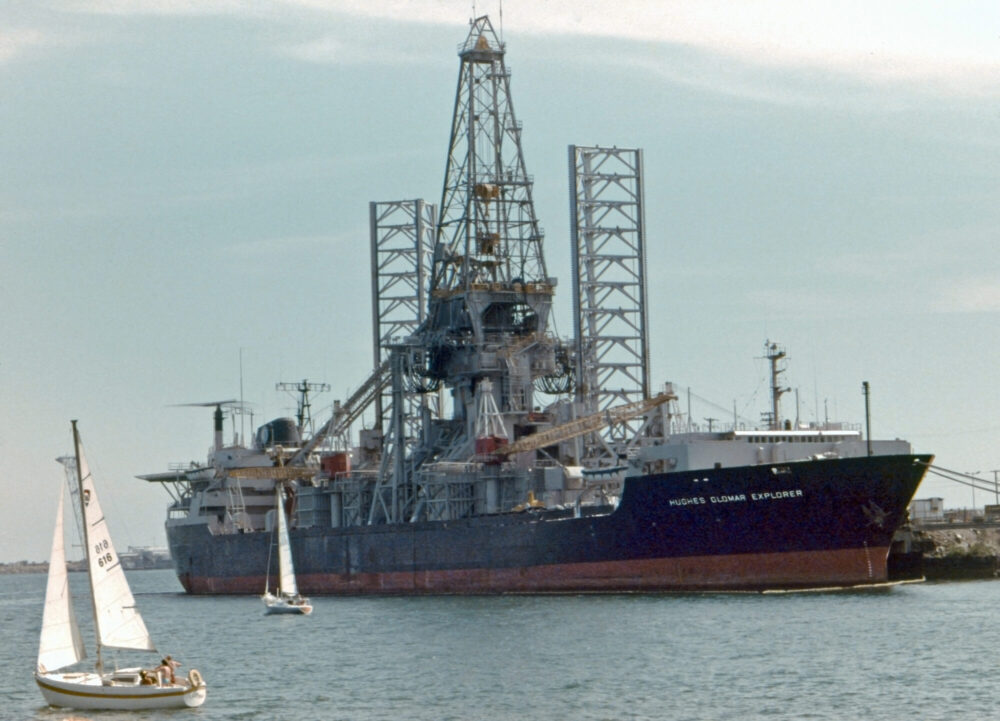
It was so big it couldn’t sail though the Panama Canal, and the giant derrick on the top had to be demounted for it to pass under most bridges. The Hughes Glomar Explorer was said to be specially designed to extract manganese nodules from the ocean floor. But it was a CIA financed ship specially designed to raise a sunken Soviet sub from nearly 5000 metres of water. Photo: Ted Quackenbush, Wikimedia Commons, CC-BY-SA-3.0.
The ship is jaw-droppingly large – 200 meters long, about the size of a battleship. It has a huge tower and derrick on the top that look a little like a cross between a kid’s Erector set and a mini Eiffel Tower.
The midsection of the ship contains an enormous hidden well that could be opened at the bottom. It was so big it could hold 7 Olympic sized swimming pools – and was called the moon pool, perhaps because it seemed big enough to swallow the Moon itself.
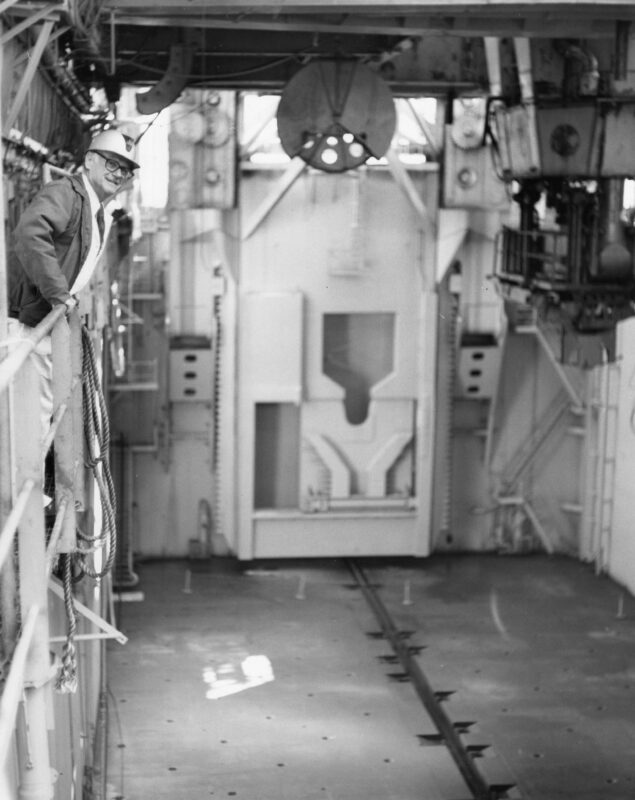
A photo of the Hughes Glomar Explorer’s “Moon Pool”, which was structured so the bottom could open to the sea, allowing cargo – like, say, a sunken Soviet sub – to be hoisted aboard with the ship’s giant derrick and claw system. From the files at the collections of the Vallejo Naval and Historical Museum. Photo: Darryl Baker
The ship, the Hughes Glomar Explorer, was built at the behest of the reclusive billionaire Howard Hughes at a cost of more than $350 million – more than $2 billion in today’s dollars.
From manganese nodules to a Soviet sub
Hughes’s widely publicized plan was to harvest mineral-rich manganese nodules from the Pacific seafloor at depths of nearly 5000 meters. No one had ever done anything remotely like this before.
Except the ship would never raise a single manganese nodule from the deep. Instead, it was an elaborately crafted cover story for the US Central Intelligence Agency.
The real goal was to raise a sunken Soviet sub, the K-129, from nearly 5000 metres of water – something that had never been done before. This was during the Cold War, and the Americans were eager to see if they could retrieve the three nuclear missiles that the sub had on board. The Soviets tried in vain to find the sub, but never did.
- You might also like: Shedding light – on the polar night
Something which looks increasingly feasible
Mats Ingulstad, a professor at NTNU’s Department of Modern History and Society, says the CIA’s choice of Hughes and seabed mining as their cover story was a reflection of how society looked upon mining the ocean bottom.
The CIA is latching into something which increasingly is looking feasible.
“The way the story is sometimes told is that this cover story helps make deep sea mining look viable, because if Howard Hughes is investing in it, it must be something that’s possible,” Ingulstad said, in the latest episode of NTNU’s English language podcast, 63 Degrees North. Ingulstad’s research involves the history
“The CIA is latching into something which increasingly is looking feasible. You have American companies, such as the Kennecott Corporation, which was a huge copper producer and was fearful of nationalization of its assets in Chile, for instance, they had been looking into deep sea mining for several years. And another player was the Reynolds Metals Company, which had gotten into aluminum during the Second World War,” he said.
At the same time, he said, what happened in the end with the Glomar Explorer – which only raised part of the sub, and did not appear to retrieve the nuclear weapons or other associated equipment that the Americans were after– can be seen as a bit of a cautionary tale, especially as Norway has just opened its seabed to exploration and mining.
“It turns out it’s more difficult than assumed to operate at great depths,” he said.
A long crazy trip
A highly specialized, extremely expensive ship, operating in full view of the world to raise a Soviet sub –and getting away with it – is a bizarre story all on its own.
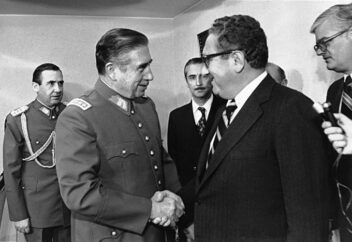
US Secretary of State Henry Kissinger (right) greets Augusto Pinochet in 1976, after Pinochet overthrew the democratically elected government of Salvador Allende. Photo: Ministerio de Relaciones Exteriores de Chile, Wikimedia Commons, CC BY 2.0 Chile
But that’s only part of the tale. The ship, built on the East Coast of the US, was so big it couldn’t get through the Panama Canal. So it had to sail around the tip of South America, with a stop in Valpariso, Chile to take on more crew and supplies.
This was a case of incredibly bad timing. The ship arrived just as Augusto Pinochet launched his successful coup, overthrowing the democratically elected president Salvador Allende.
You’d think the CIA, which is widely believed to have had a major hand in the overthrow of the Allende government, would have planned a little more carefully!
Hear more about the bizarre story of what looked like a pioneering effort to mine minerals off the ocean floor by listening to the latest episode of 63 Degrees North.
